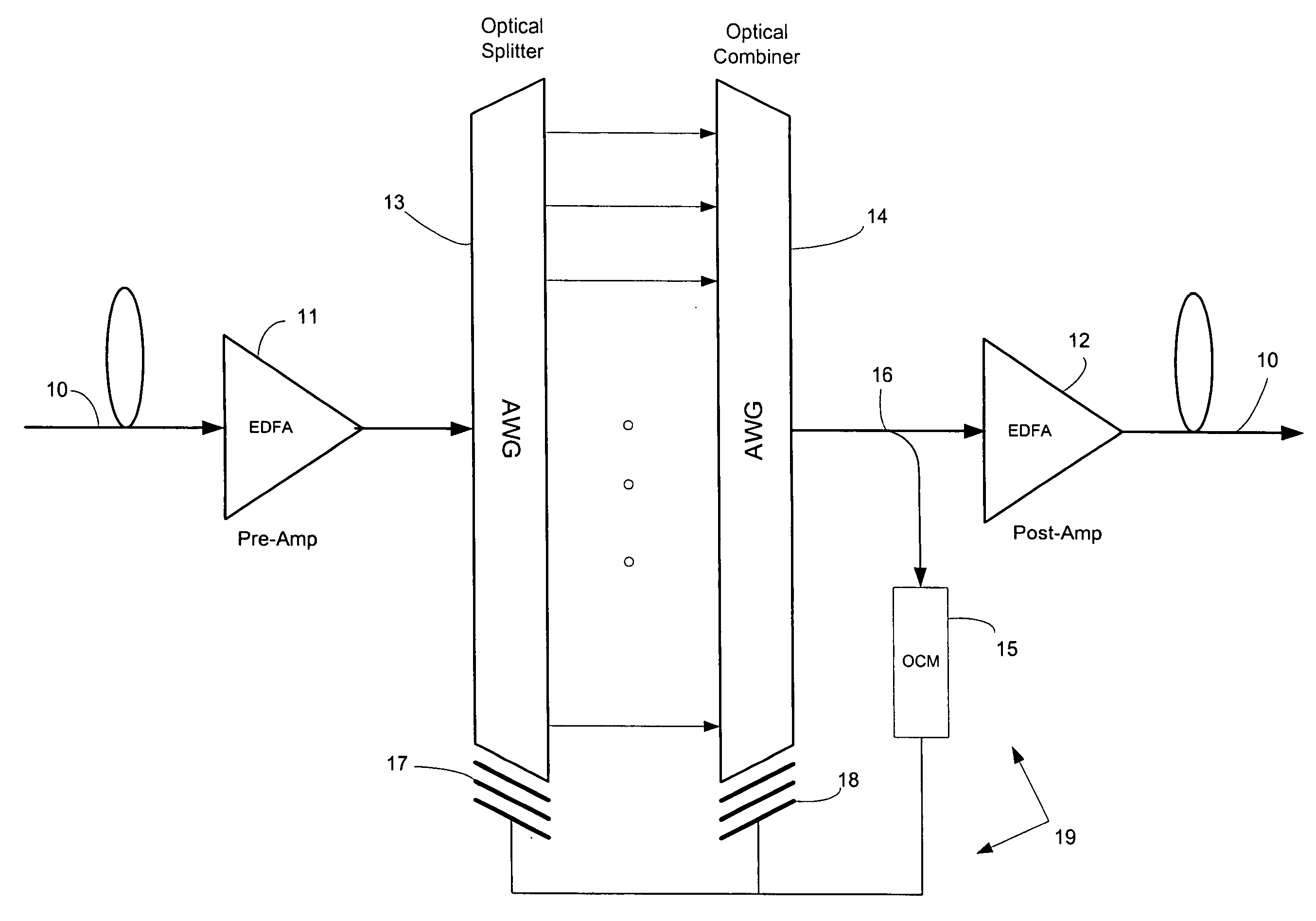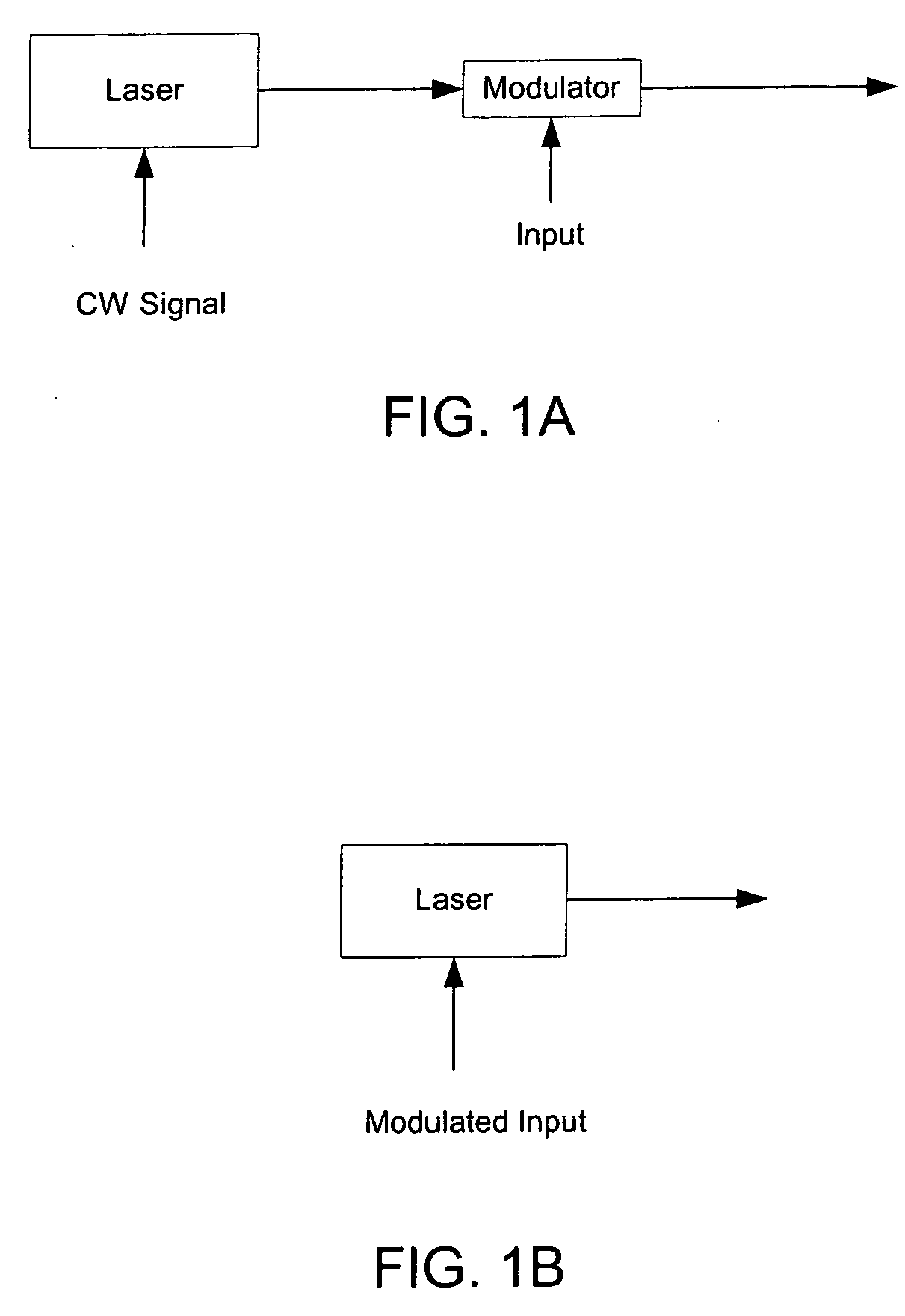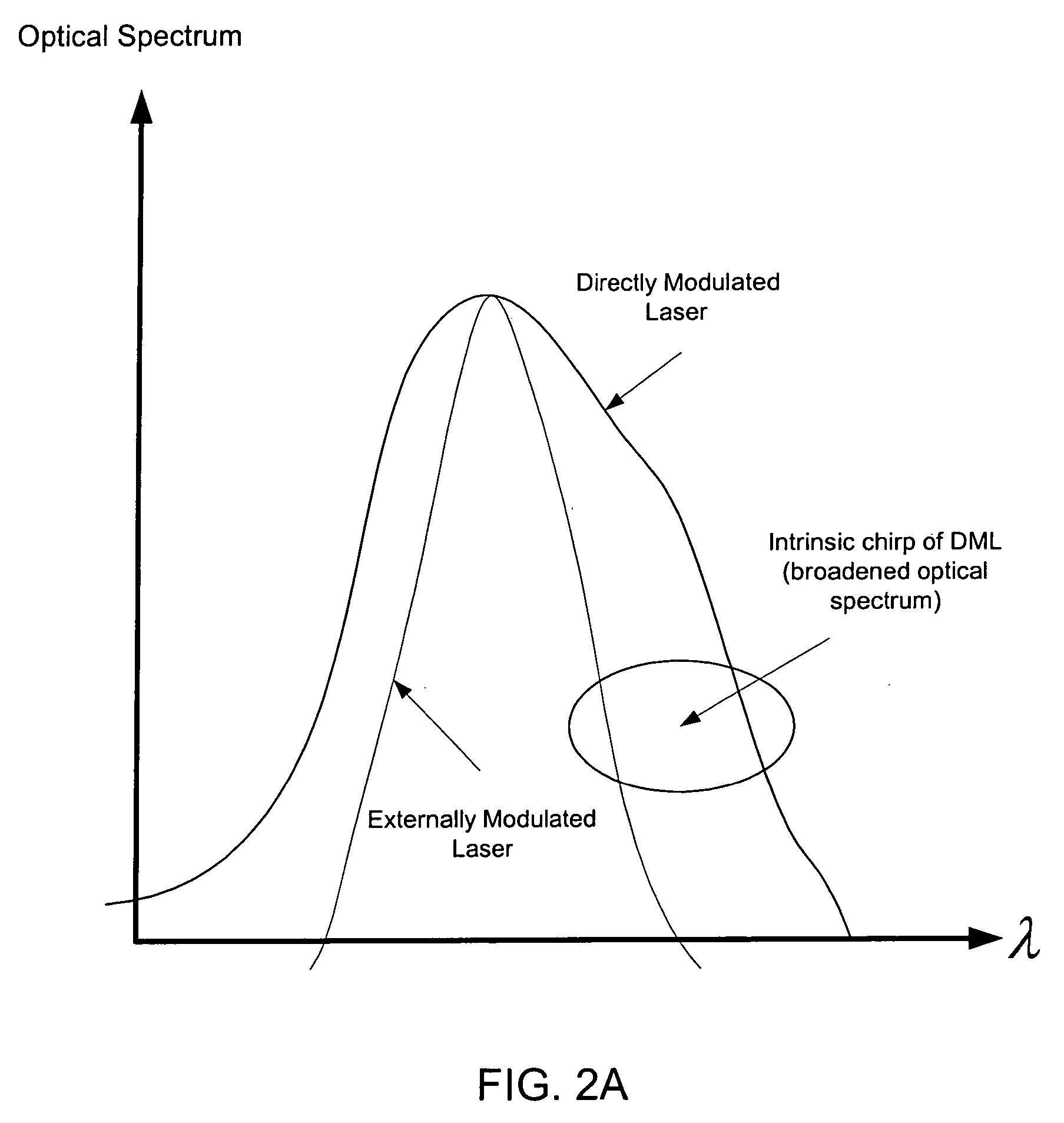Sideband filtering of directly modulated lasers with feedback loops in optical networks
a direct modulation and feedback loop technology, applied in the field of modulated laser sources in optical networks, can solve the problems of chirp, high cost of external modulated laser sources, and low chirp of modulated lasers, and achieve the effect of minimizing the chirp of dml-generated signals
- Summary
- Abstract
- Description
- Claims
- Application Information
AI Technical Summary
Benefits of technology
Problems solved by technology
Method used
Image
Examples
Embodiment Construction
[0016] The comparative outputs of externally modified lasers and DMLs are shown in FIG. 2A. It is evident that the output of the externally modulated laser has a much more narrow output bandwidth than the chirp-broadened output of the DML and is more suitable for WDM network signals than signals from a DML source.
[0017] However, recent research has pointed to a technique of narrowing DML output bandwidth by sideband filtering. The side lobes of the output spectrum are removed by a narrow optical passband filter offset from the fundamental frequency, i.e., peak output wavelength, of the DML output, or stated more precisely, the slope of the edge of the sideband filter chirps the signal oppositely from the chirp induced by the DML so that the two chirps cancel each other. As shown in FIG. 2B, the DML output for a 10 Gb / s input data signal marked by a solid line is filtered by a sideband filter as illustrated by a dotted line. While the sideband filter shown is Gaussian, almost any sh...
PUM
 Login to View More
Login to View More Abstract
Description
Claims
Application Information
 Login to View More
Login to View More - R&D
- Intellectual Property
- Life Sciences
- Materials
- Tech Scout
- Unparalleled Data Quality
- Higher Quality Content
- 60% Fewer Hallucinations
Browse by: Latest US Patents, China's latest patents, Technical Efficacy Thesaurus, Application Domain, Technology Topic, Popular Technical Reports.
© 2025 PatSnap. All rights reserved.Legal|Privacy policy|Modern Slavery Act Transparency Statement|Sitemap|About US| Contact US: help@patsnap.com



